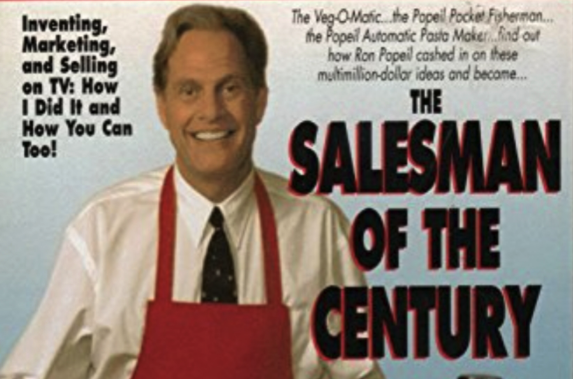Counterproductive superlatives; Writers against AI; Australia creative grants: Newsletter 2 July 2025

Newsletter 101: Why writers puff up prose, and why it never works. Plus, an open letter to publishers, AI-generated books that never appear, three people to follow and three books to read.
The superlative trap
Hey, everyone! I’m the greatest, most talented, most super-accomplished writer that you’ve ever encountered. 🥳🎉🥳🎉
Admit it. You read that and thought, This guy is a self-promoting blowhard who’s full of crap.
Of course you did. We humans have a natural tendency to disbelieve inflated claims. Superlatives set off the bullshit detector — especially when they’re piled on top of each other.
Writers in particular fall prey to this problem. Every writer has things that they feel are crucially important to communicate. If they were present with their audience in person, they’d raise their voice and gesticulate enthusiastically to communicate how important something is. So they naturally attempt to do what feels like the equivalent in writing.
They add italics. Are you paying attention yet?
They put words in bold. They write things in ALL CAPS AND UNDERLINE THEM. They even (horrors!) add exclamation points. (Sometimes more than one!!!!)
They bust out the emojis 💯✅🎉👍‼️
And they grab their online thesauruses and look for synonyms for greatest, highest, most impactful, most impressive, shiniest, and best.
I think writers instinctively know that there’s an arms race going on to get readers’ attention, so no matter how loud they feel their writing is shouting, it doesn’t seem like enough. So they try adding more tricks and more superlatives until reading what they wrote becomes exhausting.
Yes, I know our president has made this into an art form. It backfires. If it backfires for the most powerful man in the country, what makes you think it’s going to work for you?
Enough. It doesn’t.
As Shakespeare wrote, “the lady dost protest too much, methinks.” The harder you try, the more the reader’s instinct is to disbelieve. The cure to shouting for attention is never to shout louder, which makes you sound like a huckster and a fool.
So how do you get people reading what you’re writing to pay close attention?
Here are three suggestions that are far less likely to backfire.
First, use a number. Which of these are you more likely to believe?
- Writing a business book is wildly, insanely profitable!
- In a survey of more than 300 business authors, 64% showed a profit, and the median profit for books out at least six months was $11,350.
The number makes the point, no exaggeration or exclamation points necessary.
Second, vary your paragraph and sentence length. A series of paragraphs followed by a short sentence draws attention to the short declarative sentence. (See “Enough. It doesn’t,” above.)
Third, use humor and irony. Describe the opposite of the point you’re trying to make and show that the results are absurd. And ask a rhetorical question that the reader cannot fail to answer in alignment with the point you’re trying to make.
After reading and reacting to all the overblown superlatives and typographical tricks in the first half of this post, do you still think that the literary equivalent of shouting is the best way to get your point across?
Don’t look like a bullshitter. Convince people with facts, numbers, humor, and the natural rhythm of the human language.
I’ll put the emojis away now, okay?
News for writers and others who think
Prominent writers including Ben Dreyer and Gregory Maguire published an open letter to publishers decrying the use of AI. It’s full of commonsense requests like “We want our publishers to . . . make a pledge that they will never release books that were created by machines. To pledge that they will not replace their human staff with AI tools or degrade their positions into AI monitors.” Who wins in a battle between artists and capitalists armed with technology? Tough to say.
Anna Wintour is stepping down as editor of Vogue (Washington Post, gift link). I once met with her and a few other senior Condé Nast executives in a high-stakes strategy session. Preparing for that meeting was the only time I ever spent $100 on a tie.
The government of Australia launched Writing Australia, a $23 million program to support creative writers down under. Don’t bother moving there, they’re probably looking for people who’ve already been there a while.
The inimitable Alexandra Samuel, Ph.D. writes in the Wall Street Journal (gift link) about how she turned AI into her perfect career coach, which she calls Viv.
A service to use AI to quickly turn your ideas into a book? What could go wrong? Everything. Salwa Emerson explains.
Three people to follow
David Meerman Scott , for up-to-date and incisive commentary on how marketing and PR are changing
Sangeet Paul Choudary , distinguished platform strategist
Tequia Burt , editor at LinkedIn and content strategist
Three books to read
The Charisma Machine: The Life, Death, and Legacy of One Laptop per Child by Morgan G. Ames (MIT Press, 2019). What happens when a seductive and worthwhile dream crashes into the reality of the world?
Model Minority Gone Rogue: A Memoir of Living Life on My Own Terms by Qin Qin (Hachette Australia, 2025). A radical breakaway from the script of the Tiger Mom.
The Singularity Paradox: Bridging the Gap Between Humanity and AI by Florian Neukart and Anders Indset (Wiley, 2025). Ethical, social, and scientific implications of the possibility of Artificial Human Intelligence.
Programming note
There will be no newsletters in the next two weeks when I’m on vacation. The newsletter will resume on July 23.